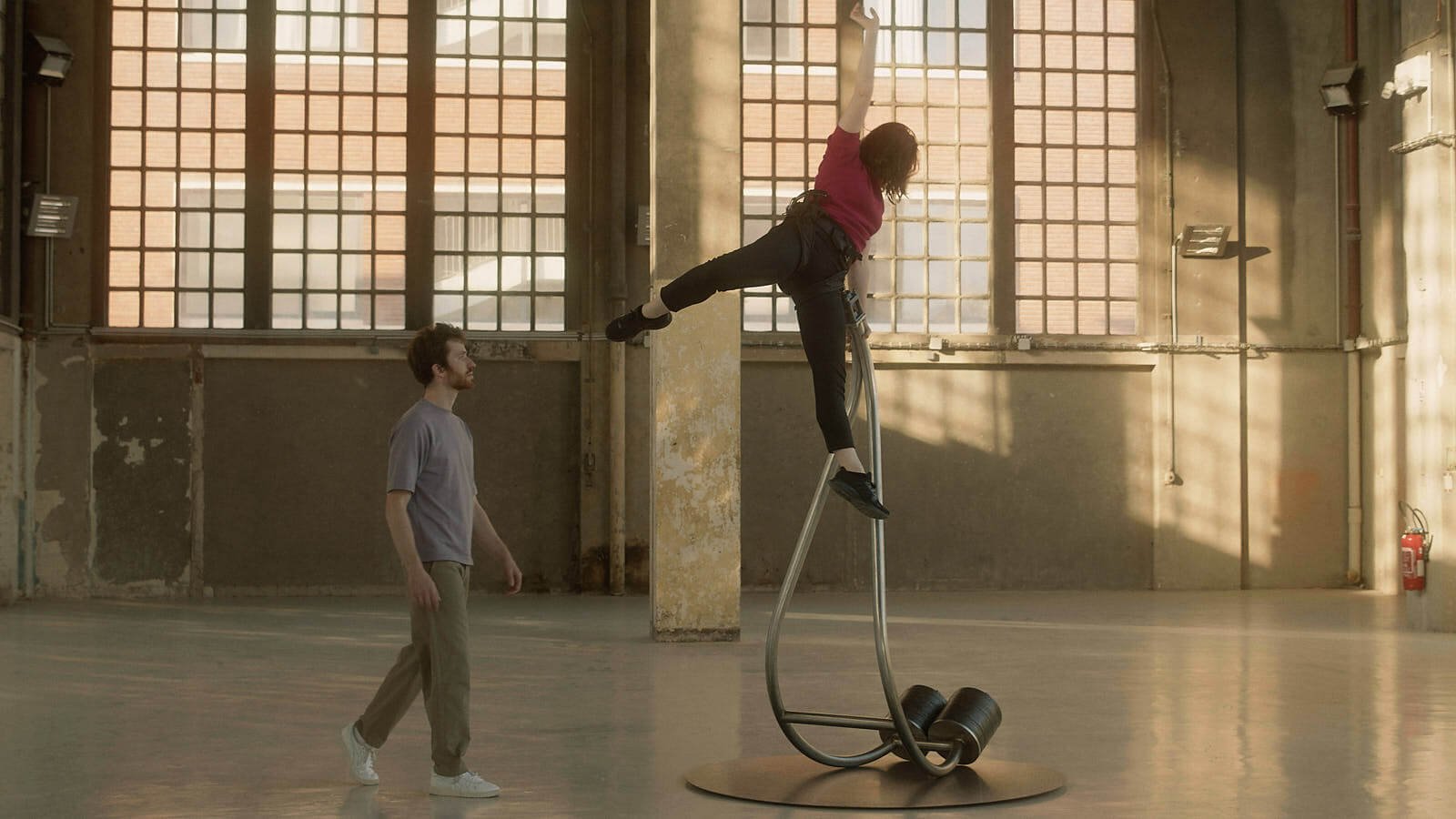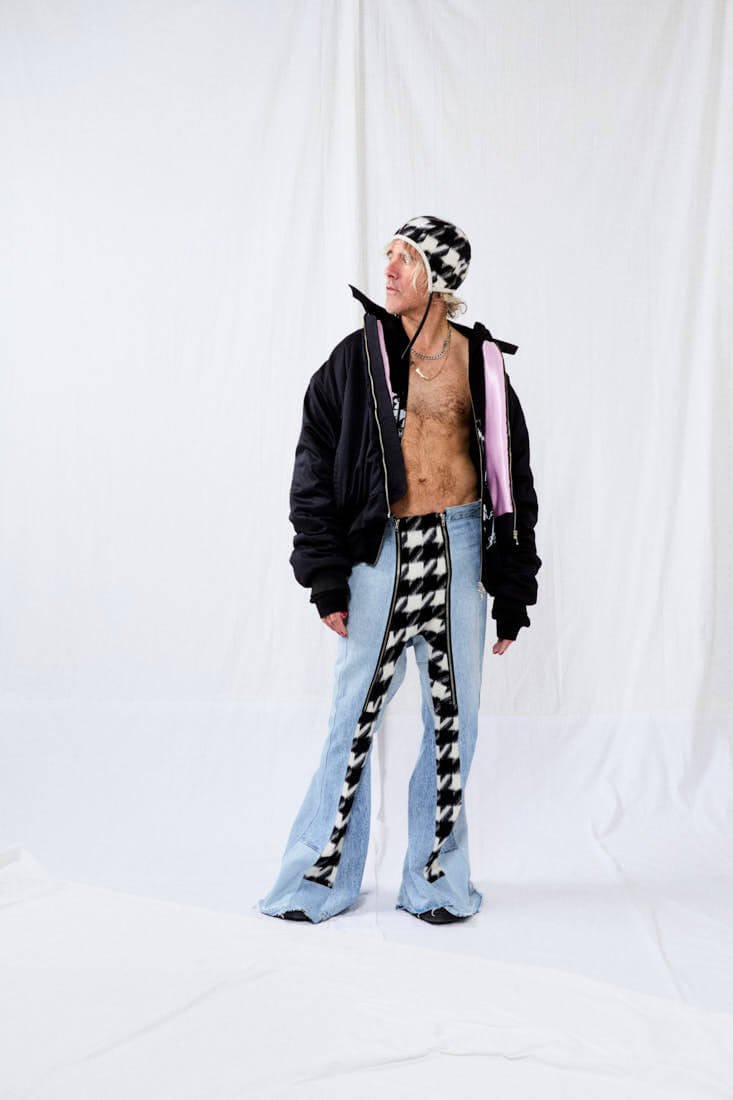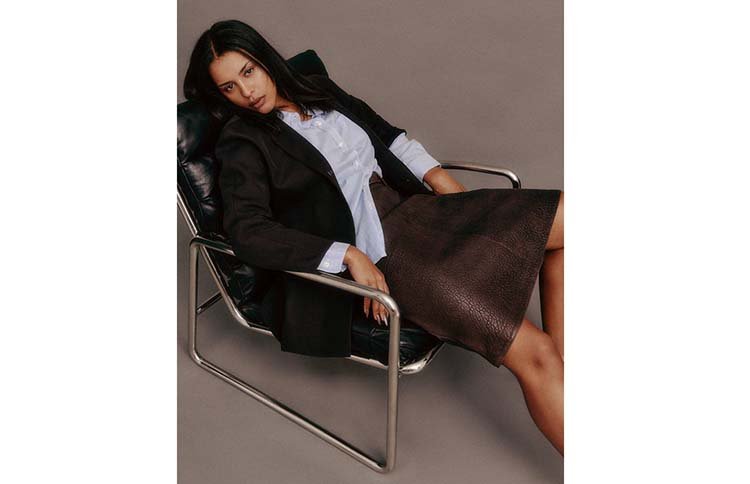.aesthetic talk
BASTIEN DAUSSE
*Choreographing New Realities
written + interview SARAH ARENDTS
Bastien Dausse is redefining the laws of physics on stage, where gravity becomes just another element to manipulate.
From his early days at the Bordeaux Circus School to co-founding Compagnie Barks, he has pursued a relentless fascination with weightlessness and the surreal. His performances challenge our perceptions, blurring the lines between reality and illusion, and inviting audiences into a space where the impossible feels within reach. Dausse’s vision keeps expanding, crafting performances that provoke deeper thought and leave audiences with a lingering sense of curiosity and wonder.
Bastien Dausse
seen by Cécile Prunet / (c) Cécile Prunet
“My fascination with weightlessness stems from a childhood dream of defying the physical limitations imposed by gravity.”
Bastien Dausse speaks with Sarah Arendts
for LE MILE Issue N3. 37 - AGE OF CHANGE
(c) Marc Lahore
Sarah Arendts
Your work often defies gravity and challenges conventional physics. What inspired your fascination with weightlessness, and how do you envision this theme evolving in your future performances?
Bastien Dausse
My fascination with weightlessness stems from a childhood dream of defying the physical limitations imposed by gravity. Watching martial arts films and seeing characters perform seemingly impossible feats ignited a desire in me to explore and push those boundaries. This theme of defying gravity has always been a central element in my work, representing both a physical and metaphorical escape. It's a research theme I'm particularly interested in at the moment because I feel there's a kind of universality to it—the universality of the relationship with gravity. I enjoy the thought that the audience can relate to what I present on stage.
For the future, I have quite a few ideas where weightlessness is no longer central. Instead, I will concentrate more on the design and reflection of new types of scenography and choreography. Even if I think that gravity will always underlie my work.
"Moon" features a series of anti-gravity devices. Can you walk us through the creative process of designing these devices?
The creative process for designing the anti-gravity devices in "Moon" began with the idea of a specific motion or sensation I wanted to achieve, such as simulating lunar gravity or walking on a wall. From there, I engaged in extensive experimentation and research, often working empirically to find the most effective solutions. This involved numerous trials, modifications, and sometimes completely reimagining the devices. The design process is iterative, requiring patience and a willingness to learn from each failure. Once the devices were perfected, the choreographic work could begin. I then spend several weeks working on a new acrobatic and choreographic vocabulary specific to each object I design.
Your performances often play with the audience's perception of space and reality. How do you approach the psychological aspects of your work, and what unexpected reactions from your audience have left a lasting impression on you?
The psychological aspect of my work comes quite naturally into my creative process. It's like a continuation of my approach. I strive to create experiences that challenge the audience's perceptions and invite them to see the world from a different perspective. I always get a lot of feedback from the audience after my shows, as if there was a need to share an experience, and that gives me great pleasure. Recently, several people have told me that they felt as if they were dreaming while awake, like a breath in their daily lives, and that my work had a calming effect. It really touched me that my work could touch people on an emotional level.
From your training at the Bordeaux Circus School to co-founding Compagnie Barks, how has this personal odyssey sculpted your artistic vision, and what core messages are you driven to communicate through your work?
I think that my training in Acro-dance at the Bordeaux Circus School, then at the Fratellini Circus School in Paris, laid the foundation for my artistic vision by providing a comprehensive education in circus and choreographic arts, emphasizing both technical skill and creative expression.
I'm also keen to see different kinds of shows and exhibitions regularly to keep my curiosity alive. Co-founding Compagnie Barks with François Lemoine allowed me to further explore and refine my artistic ideas in a friendly and collaborative environment.
In these times of profound societal change, how do you see your work not just reflecting but actively contributing to the transformations happening around us?
I see my work as a moment of escape from harshness and, I hope, as a way of provoking thought and encouraging people to envision new possibilities. Perhaps it inspires a form of lightness, a need to see the world more playfully, and to find creativity in everyday life.
Your performances transform and breathe new life into familiar spaces. How crucial is the environmental context to your work?
Each performance space offers unique challenges and opportunities, influencing how I design and execute my work. By adapting to and transforming familiar spaces, I aim to create a dialogue between the performance and its surroundings, encouraging the audience to see both the space and the performance in a new light. I like to be not just a performance that fits into a place, but one that fits with the place.
You’ve often highlighted the role of failure in sparking innovation. Can you share a specific moment when a misstep or unexpected challenge led to a breakthrough in your creative process?
One memorable moment of failure that led to a breakthrough was during the development of an anti-gravity device. An early prototype failed to provide the desired effect, leading to frustration and a sense of setback. However, this failure forced me to rethink my approach and explore alternative solutions. This process of trial and error ultimately led to a more innovative and effective design, demonstrating that failure can be a powerful catalyst for creativity and progress.
Your work consistently redefines the boundaries of contemporary performance art. As you peer into the future, what radical vision or wild ambition drives you, and how do you see your legacy disrupting and reshaping the artscape?
I feel I've barely scratched the surface of the subject at the moment. I have the impression that there are still an infinite number of possibilities and ways of developing my subject, perhaps by using new materials and new technologies. But also by creating more immersive experiences and involving spectators even more in the sensation I want to communicate.
I hope that my work will open up the field of possibilities for other circus and choreographic artists, inspiring them to take an even greater interest in objects and design to enhance their relationship with the body and performance. In the same way that so many visual, choreographic, photographic, and circus artists have inspired me and shown me that it's possible to create differently.
Table et chaises, Bastien Dausse
seen by Marc Lahore
“Recently, several people told me they felt as if they were dreaming while awake, like a breath in their daily lives.”
Bastien Dausse speaks with Sarah Arendts
for LE MILE Issue N3. 37 - AGE OF CHANGE



























